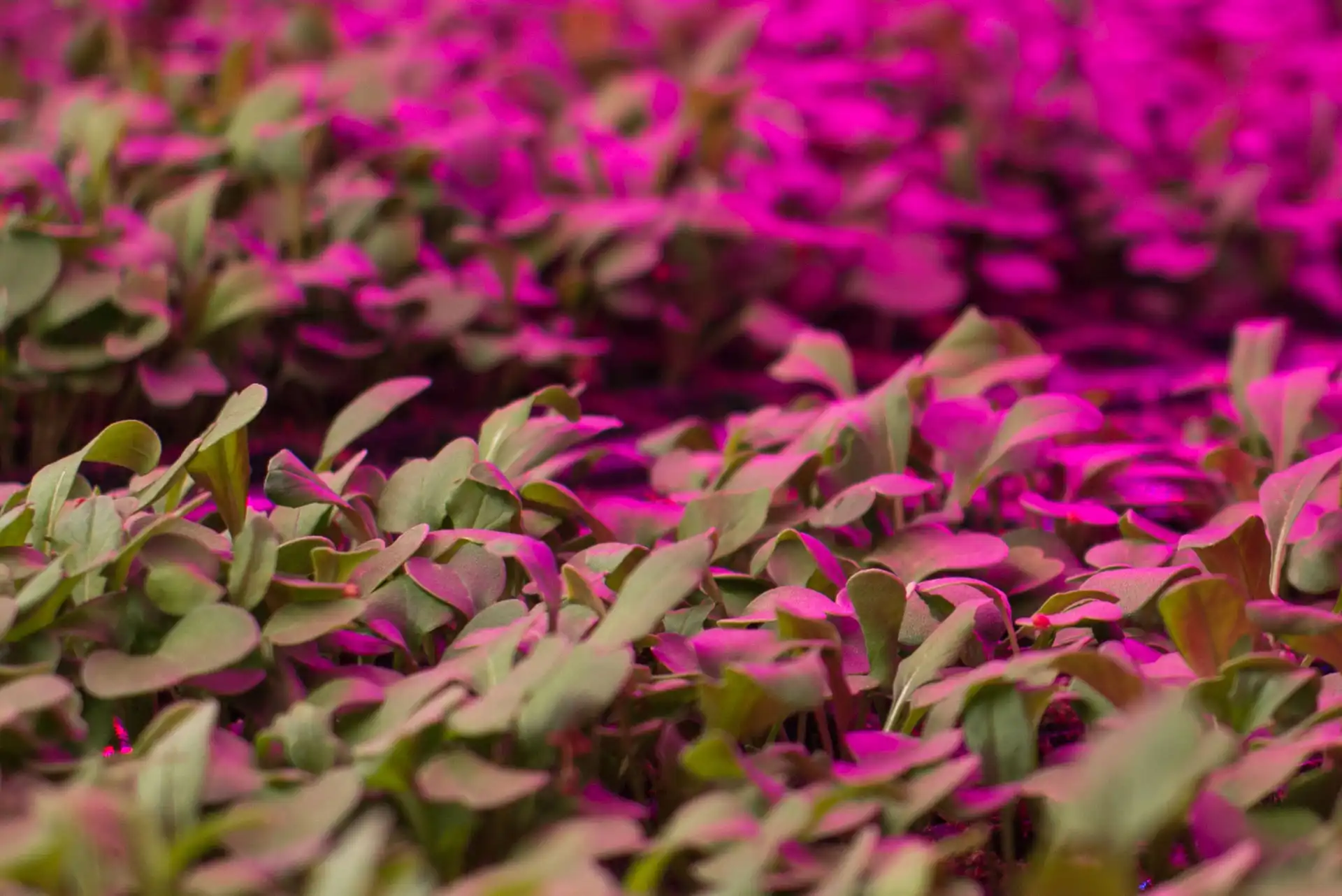Optimizing Lighting for Vertical Farming
Sun, Jan 8, 2023
Read in 4 minutes
Vertical farming is revolutionizing food production, and lighting is one of the critical components that contribute to its success; in this article we examine various lighting options, and how to optimize them to promote plant growth, development and ultimately, crop yield

With the increasing demand for locally grown produce, it’s no surprise that vertical farming has become increasingly popular, especially in urban areas where space is at a premium. However, to achieve the desired results, growers need to be intentional with their lighting strategy.
Lighting for Vertical Farming: the basics
There are a variety of lighting options available, including high-intensity discharge (HID) lamps, fluorescent lights, and light-emitting diodes (LEDs). Each has its benefits and drawbacks, and growers need to carefully consider which one to use for their specific needs. For example, HID lamps have a high initial cost but can last for years, while fluorescent lights are more affordable and energy-efficient but may not provide enough light intensity for some crops.
How to Choose the Best Lighting for Vertiacal Farming
There are some secrets known by experienced growers in vertical farming on how to choose the best lighting:
-
Understand your crop’s lighting needs: Different crops have different lighting requirements, so it’s important to understand the optimal light intensity, duration, and spectrum for the plants you are growing.
-
Consider the type of lighting: There are several types of lighting available for vertical farming, including LED, fluorescent, and high-pressure sodium (HPS) lights. Consider the pros and cons of each type of lighting and choose the one that best suits your needs.
-
Evaluate the quality of light: The quality of light is just as important as the quantity. Look for lighting systems that provide a balanced spectrum of light that mimics natural sunlight.
-
Look for energy efficiency: Vertical farming requires a lot of energy, so choosing energy-efficient lighting options can help reduce costs and improve profitability.
-
Consider the lifespan of the lighting: Lighting systems can be expensive, so it’s important to choose lighting that has a long lifespan to reduce replacement costs.
-
Invest in smart lighting systems: Smart lighting systems that can be controlled remotely and adjust to the changing needs of your crops can help optimize plant growth and reduce energy consumption.
By considering these factors, a grower in vertical farming can choose the best lighting options that meet the specific needs of their crops and their business goals.
Benefits of LED lights
Here are some benefits of using LED lamps for controlled environment agriculture:
-
Energy efficiency: LED lamps are highly energy-efficient and can reduce energy consumption by up to 50% compared to traditional lighting methods.
-
Customizable spectrum: LED lamps allow growers to customize the light spectrum to match the specific needs of their crops, which can enhance crop yield and quality.
-
Long lifespan: LED lamps have a long lifespan, which can reduce maintenance costs and make them a more cost-effective lighting option in the long run.
-
Low heat output: LED lamps produce very little heat, which can reduce the need for additional cooling systems in the grow room.
-
Space efficiency: LED lamps are compact and can be designed to fit any grow space, making them a great option for vertical farming and other space-constrained environments.
Overall, LED lamps are a highly efficient and customizable lighting option that can help maximize crop yield and quality while minimizing energy and maintenance costs.
Disadvantages of LED
Here are three main disadvantages of LED lighting for vertical farming:
Upfront cost: The initial cost of purchasing LED lighting systems for vertical farming can be higher compared to traditional lighting options, which can be a barrier to entry for some growers.
Limited penetration: LED lights have limited penetration compared to other lighting sources, which can result in lower yields for crops that require deeper light penetration.
Color distortion: LED lighting can cause color distortion in plants, which can impact plant development and make it more difficult for growers to accurately assess the health of their crops.
Despite these disadvantages, the benefits of LED lighting often outweigh the drawbacks, making it a popular lighting choice for vertical farming and controlled environment agriculture. Additionally, ongoing advancements in LED technology continue to address these challenges and improve the performance and efficiency of LED lighting systems.
Finalizing lighting to grow
Once a lighting option is selected, it’s important to optimize the light’s intensity, duration, and spectrum to promote plant growth and development. Factors such as the plant’s growth stage, the crop type, and the desired crop yield should be taken into consideration when determining the optimal lighting strategy.
In conclusion, optimizing lighting is crucial for successful vertical farming, and growers must carefully consider the various lighting options available and how to optimize them to achieve the desired results. With the right lighting strategy, vertical farming can be a highly efficient and sustainable way to produce high-quality produce year-round.